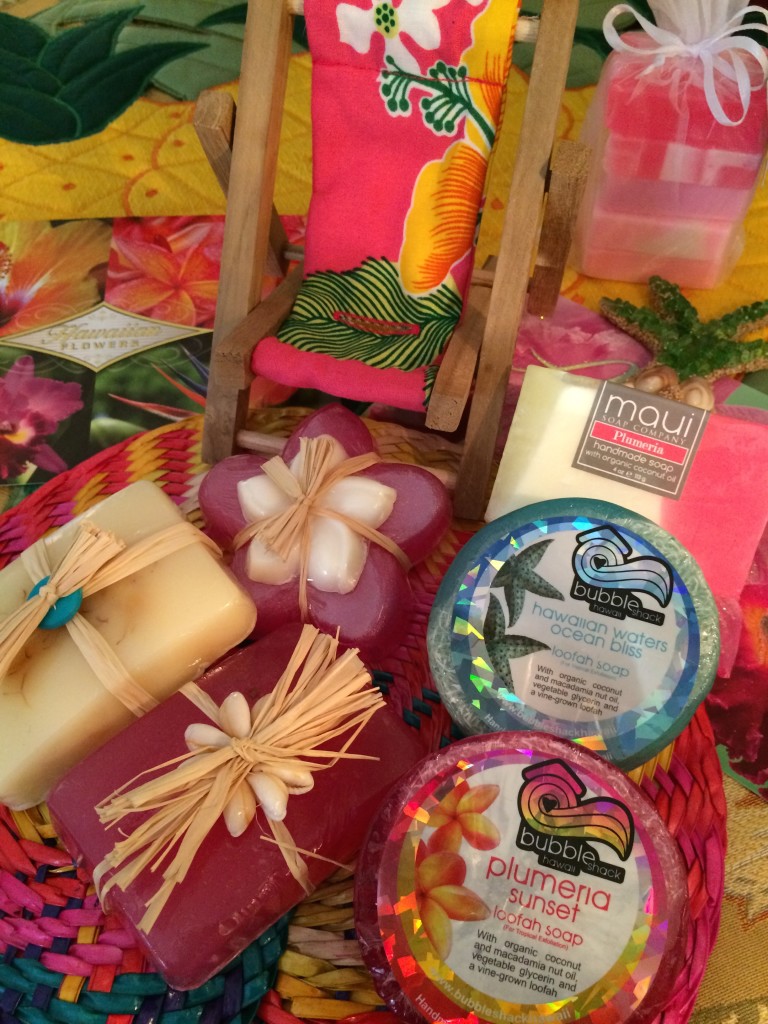 We’re featuring “All Things Hawaiian”! Also check out our reflection on our travels in O’ahu, some interesting facts about Hawai’i, what “The Aloha Spirit” really means, why Kona coffee is so popular, a glimpse into Mark Twain’s “Letters From Hawaii” and the history behind legendary Hawaiian singer Israel Kamakawiwo’ole.
We’re featuring “All Things Hawaiian”! Also check out our reflection on our travels in O’ahu, some interesting facts about Hawai’i, what “The Aloha Spirit” really means, why Kona coffee is so popular, a glimpse into Mark Twain’s “Letters From Hawaii” and the history behind legendary Hawaiian singer Israel Kamakawiwo’ole.
There’s a reason they say that smell is one of the strongest senses, evoking memories and emotions from a past time or experience.
Having been surrounded by tropical blue waters, beautiful handmade leis and the gentle, soothing sounds of Hawaiian music during a visit to O’ahu, we longed to take a little bit of the island home with us to remind us of our adventures in the land of “The Aloha Spirit.” After all, it is often the trinkets and treasures we find during our travels that serve as the most powerful reminder of the beauty, sights, smells and flavors of a foreign land.
But, it was only after returning home that we would come to realize what our most valued keepsake would be: Hawaiian soap.
Catching a “whiff” of the sweet, distinct scent of the Plumeria soap we now have on display immediately transports us back to the island, evoking the beauty and spirit of the Hawaiian Islands that we so longed to bring home.
Given that Plumeria is one of the most popular flowers in Hawaii, grown commercially for the lei industry (their blossoms can easily be put on a string – see below), this isn’t altogether surprising.
Otherwise known as “frangipanis” (the tree), Plumeria is native to tropical and subtropical America due to their ability to survive neglect, heat and drought. Considered native to South and Central America, they are most recognizable in their white and yellow form (white flower with a yellow center), but grow in a variety of colors that become more vibrant the closer to the equator they grow.
Interestingly, they are also common in the Philippines and Thailand, explained by a little known legend that Catholic missionary priests used to spread Plumerias around the world as they traveled (while the Philippines welcomed Catholic priests, China and Vietnam opposed them).
Aside from its sweet scent, Plumeria makes a particularly lovely soap due to its healing qualities: the bark of frangipanis, together with alcohol, prevents skin inflammation and is used to treat indigestion and high blood pressure. Similarly, the milk-like sap from its roots serves as a balm for skin diseases. (For other interesting facts and information on Plumeria, we highly recommend visiting All Things Frangipani).
While Plumeria has become our particular favorite because of its evocative power, it is just one of the many hand cut, handmade soaps produced on Hawaii using the island’s natural ingredients, resources and scents. Other well-known Hawaiian flowers used for perfumes and soaps include:
- Native to southern China, hibiscus became recognized as the official state flower of Hawaii in 1923
- If a woman wears a hibiscus on the left ear, it signals she is in a relationship or married; if on the right ear, she is “available”
Pikake:
- Translated as “peacock”, Pikake was named by Princess Ka’iulani for the birds that roamed her gardens in Waikiki
- Pikake, like Plumeria, is one of Hawaii’s most popular flowers used for making leis
- It is known outside of Hawaii as Arabian or Indian Jasmine, and is the state flower of the Philippines known as “Sampaguita”
- Pikakes is processed as the primary component for Jasmine tea in China
So, if you are dreaming of someplace tropical, are in need of a “spa day” or are looking for a gift, Hawaiian soap surely won’t disappoint (we’re already ordering more online!).
Be sure to check out the Maui Soap Company, which offers “products that embody the land, the ocean, and the Aloha spirit of the Hawaiian Islands.” See also Island Soap, producers of handmade soaps on the island of Kauai (the Surfer’s Salve and coconut lotion caught our attention!)
And don’t forget: always take time to smell the Roses…or, in this case, the Plumeria!
